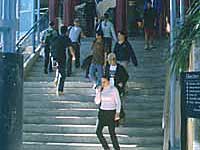|
||||||||||||||||||||||||||||||||||||||||||||
| Chemical Reaction Engineering - CEIC2005 | ||||||||||||||||||||||||||||||||||||||||||||

Description The previous course name was Chem Eng Applications 1.
Applied physical chemistry, kinetics and reaction engineering. Thermodynamic concepts related to Gibbs free energy as applied to phase equilibria and kinetics are illustrated and expanded. In this course, the student will learn the key concepts of chemical reaction kinetics (such as order of reactions, elemental reactions, reaction mechanisms, steady state kinetics, temperature dependence of chemical reactions, the influence of catalysts on the reaction kinetics etc.) and how these kinetic concepts can be employed to choose and operate a suitable reactor for a certain reaction. Reaction kinetics and thermodynamics are interlinked: One tells you how fast a reaction is, the other tells you whether the reaction will proceed at all. Finally, kinetics and thermodynamics are applied in reaction engineering. Topics include Introduction to reactor design: ideal batch, steady state mixed flow, steady state plug flow, size comparisons of ideal reactors, optimisation of operating conditions. Multiple reactor systems: reactors series and parallel, mixed flow reactors of different sizes in series, recycle reactors, autocatalytic reactions. Multiple reactions: reactor design for reaction in parallel and reactions in series, series-parallel reactions. Temperature effects: heat of reaction, equilibrium constants, optimum temperature progression, adiabatic and non-adiabatic operation, product distribution and temperature. Kinetics of rate processes: Significance of the rate laws and models for distributed and lumped parameter systems. Experimental measurement and correlation of process rates. Laboratory experiments to illustrate concepts are part of the course.
|
||||||||||||||||||||||||||||||||||||||||||||


